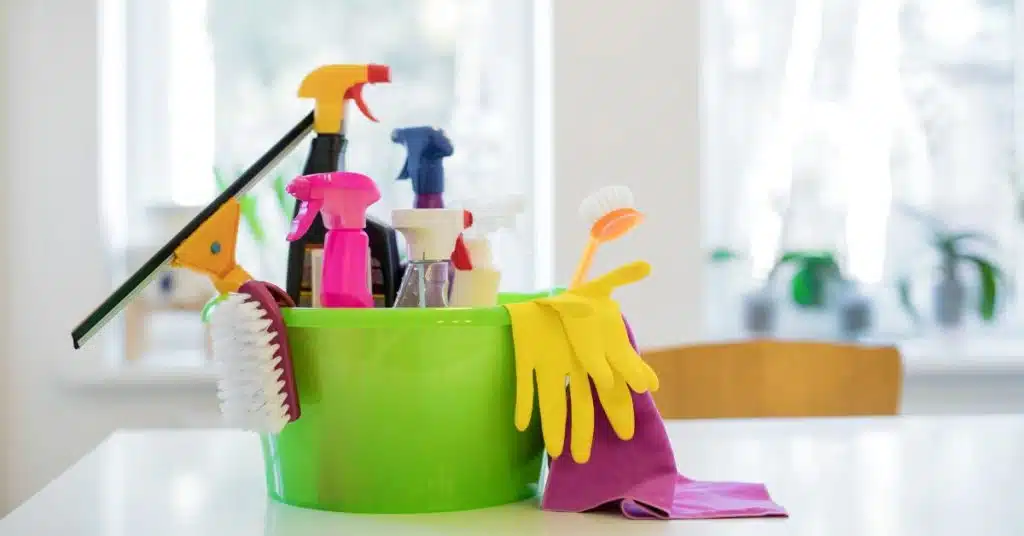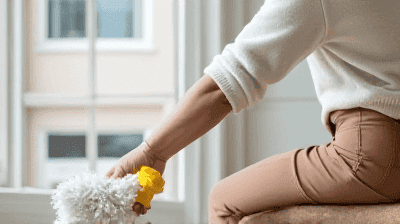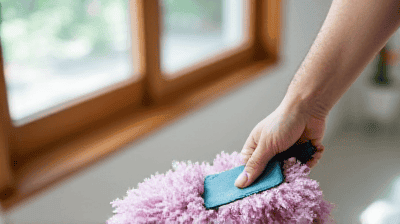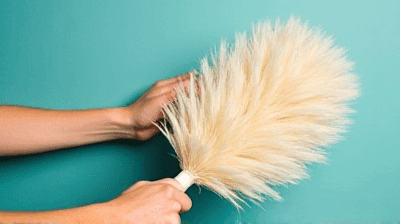5 Dusting Hacks to Keep Your Home Sparkling Clean



Maintaining a clean, dust-free home can feel like an endless battle. Dust accumulates in every corner, and it seems that no matter how frequently you clean, it eventually returns. While it may appear daunting, keeping your home sparkling clean is entirely achievable with the right techniques and tools.
Before diving into the dusting hacks, it is essential to understand what dust is and why it accumulates. Dust is composed of tiny particles that come from various sources, including dirt, pollen, skin cells, hair, textile fibers, and even tiny insect parts. These particles can easily become airborne and settle on surfaces throughout your home.
Dust can significantly affect indoor air quality and is a common allergen. Regular exposure to dust can exacerbate allergy symptoms, trigger asthma attacks, and contribute to respiratory issues. For individuals with preexisting conditions, a dusty environment can make symptoms worse, leading to discomfort and even health complications. Therefore, keeping dust levels in check is not only about maintaining a clean appearance but also about ensuring a healthy living space.
Dust accumulates for various reasons. Common factors include:
Understanding these factors can help you be proactive in managing dust in your home.

One of the most effective tools for dusting is the microfiber cloth. Unlike traditional dust cloths, which may just push dust around, microfiber cloths are designed to trap and hold onto dust particles.
When selecting microfiber cloths for dusting, look for those that are labeled specifically for cleaning. These cloths often have a thicker texture and more fibers, enhancing their dust-trapping ability. Consider investing in a few different colors, so you can designate specific cloths for different cleaning tasks—this can help prevent cross-contamination.
Microfiber cloths can be used for both dry and damp dusting. For most surfaces, a dry cloth is sufficient. However, for sticky or greasy areas, you can lightly dampen the cloth with water or a mild cleaning solution. Here’s how to utilize both methods effectively:
Dry Dusting: Simply use the dry microfiber cloth to wipe surfaces. Its fibers will attract and hold dust, making it an efficient choice for quick clean-ups.
Damp Dusting: For areas with built-up grime, spray a light mist of water or a solution of equal parts vinegar and water onto the cloth. This helps to lift any sticky residue while still trapping dust.
To maximize the effectiveness of your dusting:
With these tips, you can harness the power of microfiber to keep dust at bay.
While most people associate vacuuming with carpet cleaning, your vacuum can play a significant role in dust removal throughout your home. It can tackle dust in hard-to-reach places and help keep surfaces clean.
Most vacuum cleaners come with various attachments designed for different cleaning tasks. Using these attachments can enhance your dusting efficiency. Some common attachments include:
To effectively vacuum dust, consider the following techniques:
Regular vacuuming should be part of your cleaning routine. Consider vacuuming at least once a week to keep dust and allergens at bay. For homes with pets, you may need to vacuum more frequently to manage hair and dander.

Using homemade dusting solutions can significantly enhance your cleaning effectiveness. Not only are these solutions often more affordable than store-bought options, but they can also be made with natural ingredients, making them safer for your family and pets.
One effective DIY dusting solution is a mixture of white vinegar and water. This solution is not only effective for cleaning but also helps to cut through built-up grime and reduces odors.
Adding essential oils to your dusting solution can provide a pleasant aroma while cleaning. Some popular choices include:
To use essential oils, add a few drops to your vinegar and water solution. This will not only leave your home smelling wonderful but also enhance the cleaning properties of your solution.
If DIY cleaning solutions are not your preference, many commercially available dusting sprays are effective. Look for products that are environmentally friendly and free of harsh chemicals. Check labels to ensure they are safe for the surfaces you will be cleaning.
One of the most effective strategies for keeping dust to a minimum is to declutter your home. Reducing clutter not only improves the overall appearance of your space but also lessens the number of surfaces where dust can settle.
Set aside time regularly to go through your belongings. A monthly decluttering session can keep your home organized and reduce dust accumulation. Here are some tips:
To make decluttering manageable, you can approach it by zones. Focus on one room or area at a time, breaking the task down into smaller parts to avoid feeling overwhelmed.
Pay attention to areas in your home that tend to accumulate clutter more quickly than others. By addressing these hotspots regularly, you can stay ahead of dust and prevent major clean-up efforts.

A well-structured cleaning routine can make managing dust much easier. By establishing habits that incorporate dusting and cleaning into your daily life, you can maintain a spotless home with less effort.
Incorporating small daily cleaning tasks can significantly reduce dust accumulation:
Set aside a specific day each week dedicated to cleaning tasks that require more time and effort. Your weekly cleaning schedule might include:
In addition to daily and weekly cleaning, consider planning for deep cleaning sessions at least once a season. Deep cleaning allows you to focus on areas that often get neglected, like behind appliances and inside closets. During these sessions, tackle:
Keeping your home sparkling clean and free of dust is achievable with the right tools, techniques, and a bit of consistency. By implementing these five dusting hacks—using microfiber cloths, vacuuming effectively, creating DIY dusting solutions, decluttering regularly, and establishing a cleaning routine—you can significantly reduce dust accumulation in your home.
Regular dusting not only improves the appearance of your living space but also enhances air quality and overall health. Take pride in your home by adopting these practices, and enjoy the benefits of a cleaner, healthier environment for you and your family.
Now that you have the tools and strategies needed to keep your home spotless, it’s time to put them into action. Happy cleaning!